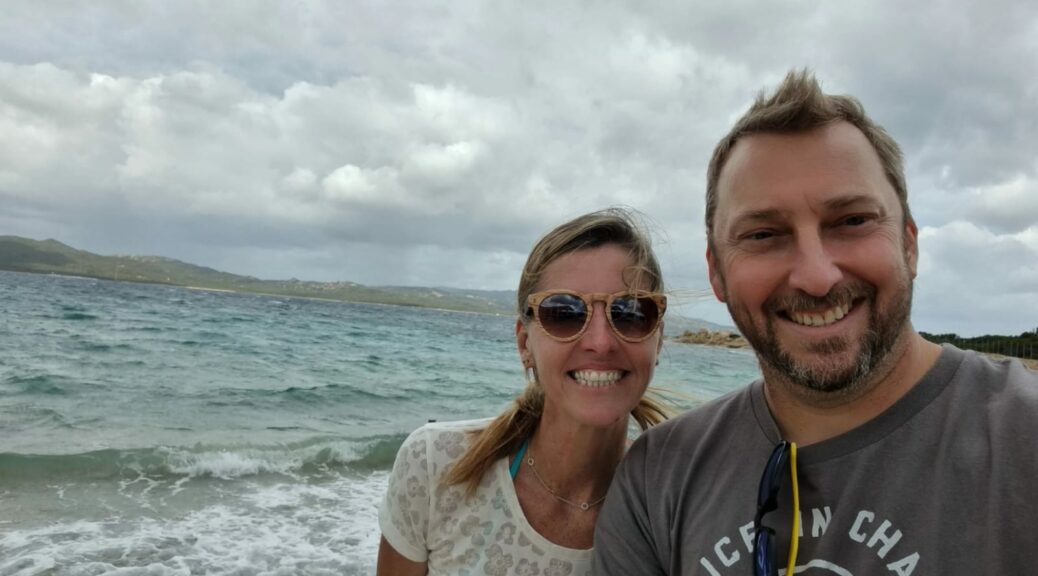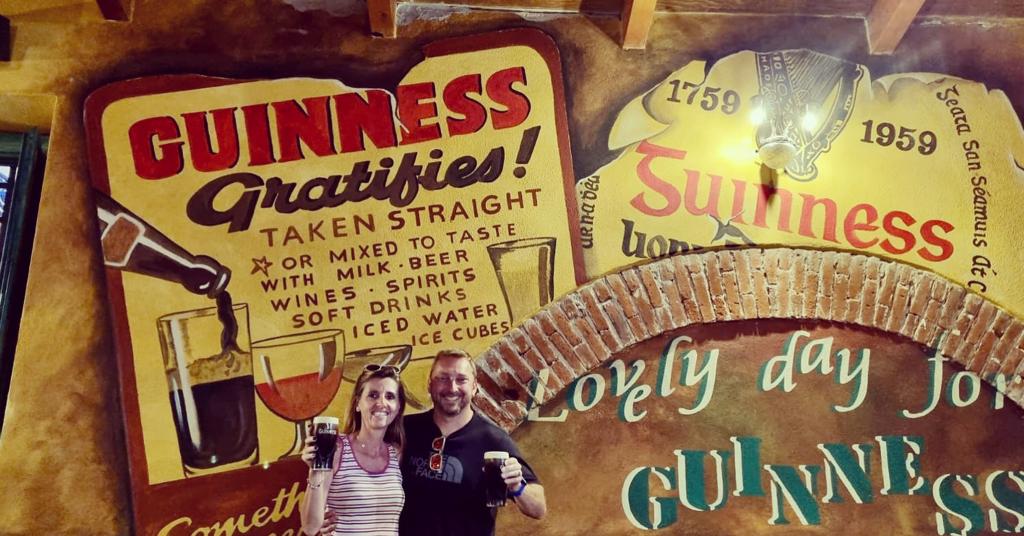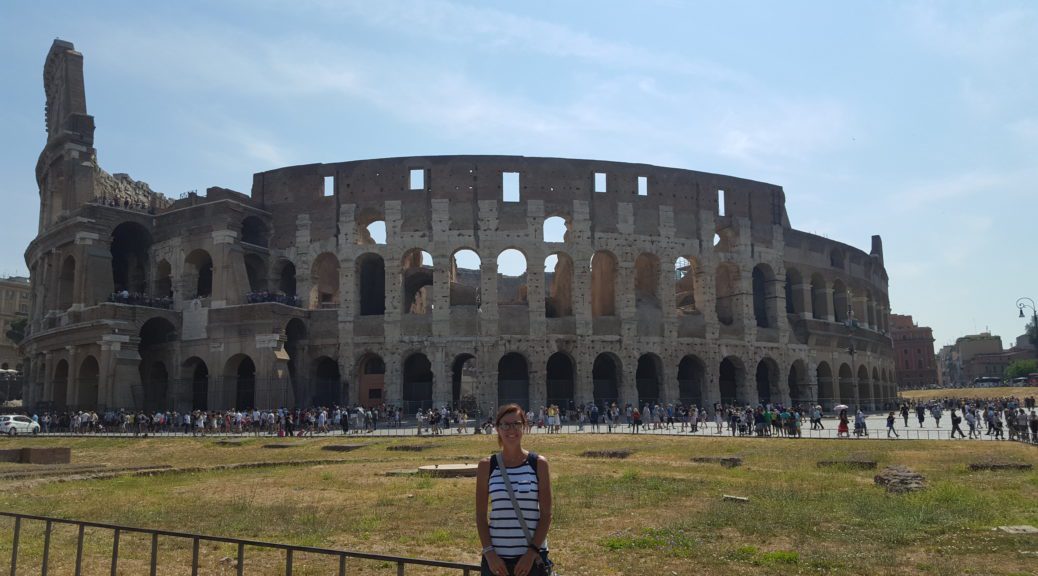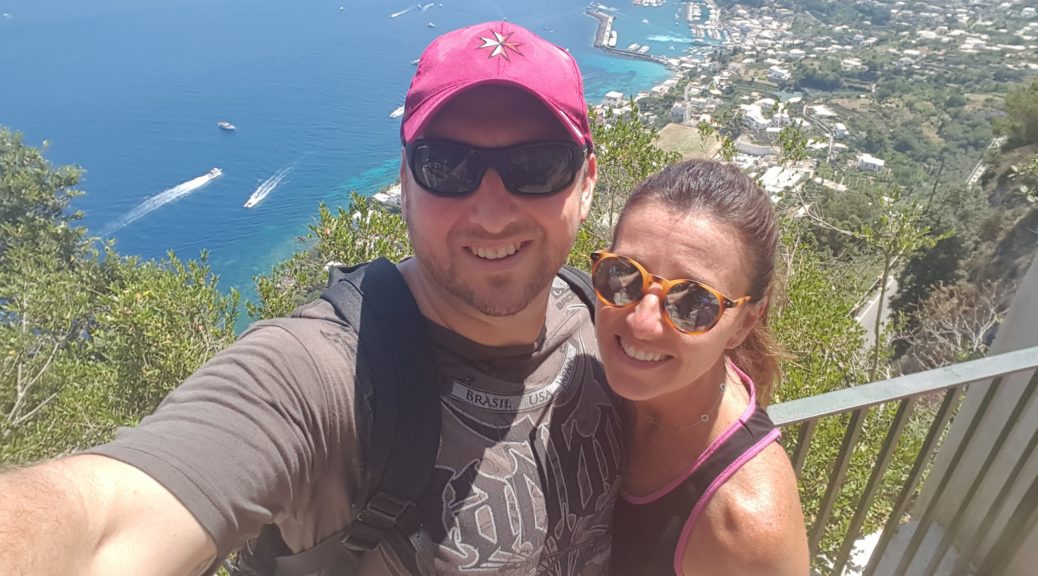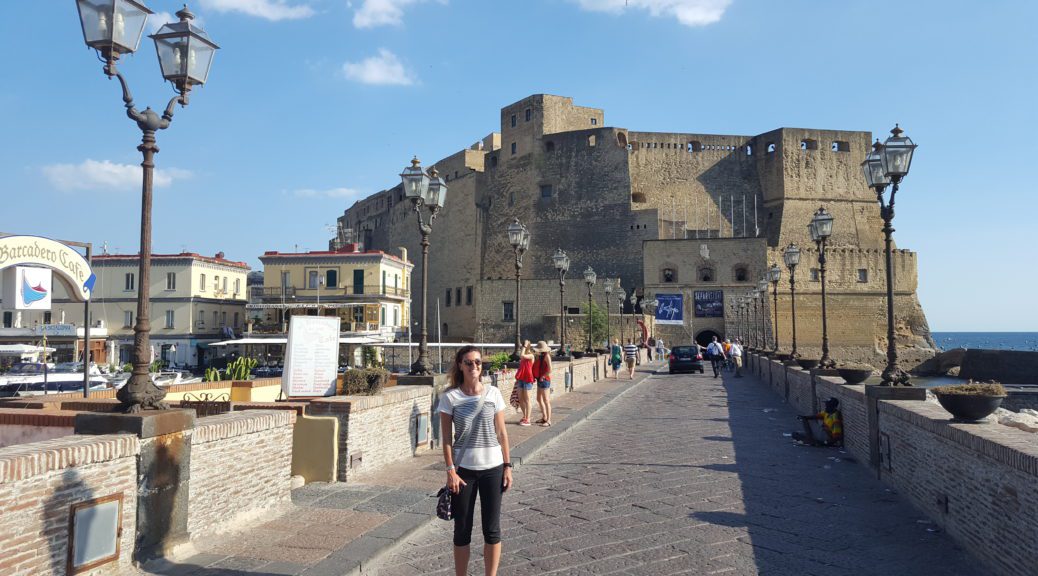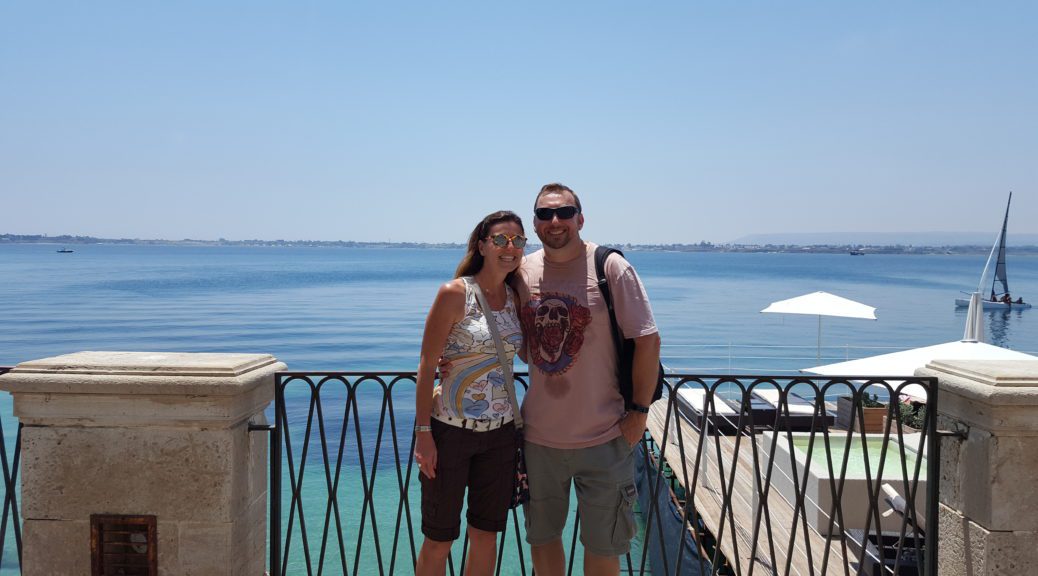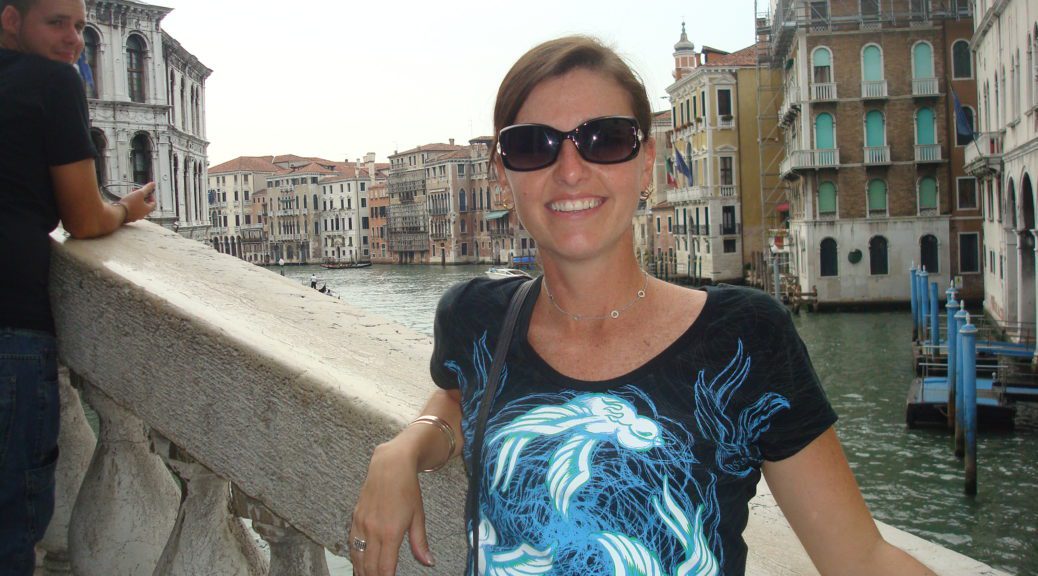ORISTANO TO OLBIA
25 – 29 September 2022
We awoke to pouring rain in Oristano which was a bit of a thorn in the side of our plans. We were destined to go to Alghero via the town of Bosa, mentioned more than a few times as being one of the most beautiful towns in Italy.
As several rows of Smartie-box townhouses embedded against a steep hillside, neatly placed between a wide river at its entrance and an ancient castle overlooking the town, it was not the ideal excursion for a rainy day.
Not keen on canning the plan completely, we decided to lay low for a bit and check-out of our hotel at the latest possible time to give the rain a chance to blow over. This also gave us a lot more time to enjoy the breakfast buffet which, as per the previous we’d experienced in Sardinia so far was a gluttonous mix of charcuterie, cheeses, pastries, eggs, yoghurts, juices, cakes and puddings. Heaven for a sugar junkie like me!
Leaving at 11 (the hotel, not the buffet; I would have literally burst if I spent any longer in the breakfast room) we made our way 40km up the coast and, fortunately, seemed to drive through and ahead of the rain. By the time we got to Bosa it was grey but clear.
We started our self-guided city tour at the Bosa Marina to have a closer look at the tower at the water’s edge. Unfortunately it was closed to the public so it was just a case of going up to the tower, taking a snap and repeating the return journey back to the car to proceed to Bosa town.
We took a walk up to the Castello Malaspina, which made a brilliant vantage point to overlook the town below. Much like what we had seen in Cagliari old town, it was a dense packed community of mostly 3-storey tall buildings very close together, winding their way down the hillside on cobbled streets.
While we had been efficient in taking the steep steps up to the castle, we opted to take a more leisurely zigzag down from the castle which proved to be an interesting activity in itself.
We had noted that the Sardinians were generally a nation petite in stature, but were still surprised and tickled by how many of these old houses had really tiny doors – to the point that they were barely wider than my shoulders and took me up to my chin. We also commended the locals on their managing the bumpy and slippery cobblestones which were even tricky in our top-end trainers!
We also noted that Bosa, wise to being a tourist town – clearly evidenced by the number of fellow tourists who were speaking English, French and German, had several restaurants bucking siesta conventions and serving a roaring trade of pizza, pasta and seafood.
Some of the restaurants were no more than a handful of tables; all that could fit in the narrow alleys and small apertures at their disposal.
If Julia’s story was true about these towns being purposefully built as a labyrinth with narrow winding rows to slow down and confuse enemies, then it would have taken a highly motivated army of Lilliputians with instinctive better-than-modern-Mini GPS and Nike-level sandals to even bother with Bosa! Maybe stop in for a pizza en route to raiding the next village though…
The last leg of our journey was 60km to Alghero. We had begun an audiobook called ‘As Good As It Gets’ by a British comedian called Romesh Ranganathan and the three of us made our merry way.
It was a very scenic drive through the countryside with parts where we climbed up and through mountain roads that gave spectacular views across the green fields and to the hint of the sea on the horizon. At other parts it was dense greenery, obscuring anything that lay beyond.
Entering Alghero it was very clearly a seaside holiday town. Double lanes on either side for the nobody-in-any-hurry cars, holiday flats lining the inland side with restaurants and shops selling holiday tack below.
On the beach side, there was a palm tree-lined 3 or 4 metre wide smooth walkway, with demarcated bicycle lanes. Bubbles of cafés and kiosks serviced the visitors, either seated to face the beach or spilling onto the beachsand. The sea glistened and shone, gamely gently bobbing the yachts and washing some of its crystal blues waters up the sand to give everyone something to watch.
Great spot for a couple of days’ downtime.
We had rented an apartment for our stay. Even though we were a bit early for our 4pm check in, we made our way to our neighbourhood such that we could park the car, have a walk around and worry about the admin later.
When we arrived though, the receptionist was there and we were able to check in and offload.
We were on the opposite end of the beach to the old town, so the obvious plan was to amble our way back along the beachfront road we’d come in on, all the way to the citadel.
You’d think that by now these historic fixtures would be getting a bit like wallpaper to us… but no. The same fascination at being immersed in an open air museum!
It helps that Alghero has many exhibits along the battlements so you can freely touch and snap catapults and cannons as you walk along the battlements.
Of course it was thirsty work, so one must stop for an ice cold Ichnusa every now and then to keep motivated!
The evening trade was just coming to life. We Googled to find somewhere opening at 18h30 and found a delightful rock bar cafe called L’Anfora down a side street. We were standing in their doorway when they opened…
Although the restaurants open later, there seems to be a tapas culture on this side of the island, which we assumed to be a latent Spanish influence. Assumed and applauded, that is, as we tucked into the basket of chips that was served along with our beers.
By the time we left all the tables outside the bar were full; most patrons enjoying charcuterie boards with their drinks. Perhaps that was the way to survive the fasts between meals, but in our state a few slices of cold cuts and a wedge or two of fancy cheese would not have gone far!
We moved on to dinner – again the first arrivals at the place. We’d chosen a place called El Pultal because it had a rooftop terrace. Not that it had a view of the sea or anything, but it was quite novel to be among the rooftops with the fresh air and the soundtrack of the streets below.
Ordering a simple Diavola pizza and penne Ragu (bolognaise back home), we marvelled at how the quality of the Italian process made the meal more about the dough and the pasta than the sauces. Not just a delivery mechanism for a laundry list of toppings.
We were still talking about it when we took the long walk back along the beach to get home. The beachfront was still busy, with people just arriving for their evening’s entertainment. We again wondered if we were better off squeezing a secret mealtime in during siesta so that we could integrate… or if we’d like it too much and that would create havoc for our schedule when we got home!
MONDAY
We had the luxury of a leisurely start to the day before donning our runners and putting takkie to tar to run the same loop we’d ambled the night before, and fill in the photo album gaps where we’d been unable to get good snaps because it was too busy.
Even though we set off after 9, we had the place to ourselves. Besides a few cafes lapping up the tourist breakfast trade, the seaside was still sleeping and we were able to clock 7.5km or so with photo stops in well under an hour.
Not that there was any rush. With a lazy day ahead, we weighed up our options on things to do and decided to hunt down a seafood lunch and then do a bit of wine tasting.
Reassured from our Sardinian experience thus far that there was no such thing as a bad beach, we decided on the closest out-of-town, Spaggia del Lazzaretto with a restaurant called La Torre that had good reviews.
We only had 6km to drive, which was a win since we were nothing short of literally starving.
Paying the very least passable amount of homage to the majestic ocean, we moved briskly to a seaside table in the restaurant and, with necessity being the red-headed step child of intention, we poked like Neanderthals at the menu so that the waitress was clear about our predestined spaghetti vongole and calamari platter order. Getting a strawberry granita (grown-up Slush Puppy) for an additional fingerpoint was an unexpected win.
The lunch was delicious and plentiful. We debated the latter. Just because we were full, should it really be described as plentiful? we certainly would have gotten more or paid less at home. Was that a quality / standard of living / forex rate debate? Or were we adjusting; getting indoctrinated? Would we start making micro meals in the middle of the night when we got home?!
Clearly a week into the holiday we were decompressing and our contextual barometer was calling the shots on what should be blown out of proportion!
What a perfect time to add vino into the mix!
We tootled down the road to a wine farm called Sella & Musca (named after the attorney and engineer who had founded it in 1899). Although the wine tasting and tour for 3pm had already been fully booked, we’d decided to wing it with an unannounced arrival, figuring our lack of Italian would both be a good reason and a good excuse not to bother with the tour.
Turns out that our hosts were as chilled as their wine, and we were able to take up a table on the terrace and sample their sparkling brut and rosé options.
We were so delighted with our experience that we thought we’d pair it with the other farm a few kilometres down the road. It was not to be, however, since we found on arrival that they are not open on Mondays. Oh well.
With the sun still reasonably high in the sky, we returned to our own home Beach for a dip in the sea before opening our own bottle of Red that we’d had to excuse-buy in Bonifacio.
Despite Chris having to pull some quite fancy moves to remove the cork with the broken opener in our apartment, we were soon(ish) sipping on an absolute quaffer, enjoying the last of the afternoon sun, overlooking our swimming pool and (one of us at least) catching up on a bit of traveloguing.
TUESDAY
Being a driving day, we had had the foresight to plan an in-home breakfast. Sourcing from the large supermarket in front of our holiday apartment block, we had intended a simple ‘eggs on toast’ sort of formula.
Procuring the two requisite items had triggered some grocery tourism though and we found ourselves engrossed in how different even the staples were from our choices at home.
There was an entire aisle – both sides, from end to end of the shop – of pasta options of every conceivable shape, size, colour and dietary requirement! More biscuits than you can imagine, with the vast majority looking like butter cookies / shortbread rather than the rainbow we are presented at home.
By contrast, the eggs were tricky to find because the display was a small stack of a single brand in two sizes plus a free range option, where the Sardinians would be shell-shocked by the wall of options they’d be faced with if they shopped in South Africa.
While browsing we spotted a rotisserie chicken at the deli which completely outshone the eggs idea and would make for a splendid sarmie.
Filling sorted, we now needed bread of some sort. From the bounty of choices, the most odd was a loaf of 12 slices, packed as 3 side-by-side rows of 4, rather than the conventional straight loaf. There was a long row of baskets with rolls made on-site; easily a dozen or more options of round white rolls. We poked and prodded a few and picked a bag of 3 buns, each big enough to cover my hand with fingers extended.
Breaking our West to East coast journey with a stop in Sassaria (which we figured must be important since it’s the city after which the province we’d been in for the past few day is named), we set off.
We barely had time for a chapter of our Romesh audiobook before the 32km had whizzed by (relatively speaking, with a 70km speed limit most of the way).
On arrival, we underwent the now-expected exercise of finding an available parking bay somewhere we were allowed to park. Opting for a residential area, which we rationalised was only reserved for resident’s overnight parking pleasure since they would surely be out at work during the day, we parked and set off on foot to see the sites of Sassaria.
We were just arriving at the Palace – stated as ‘Open’ on Google Maps – when suddenly the clouds opened. Stepping into the foyer, thinking we’d miss the cloud burst by taking the tour, our hopes were dashed when the security guard told us the guide would only be arriving at 12 and there was no entry until then.
He did give us a tourist map and we asked many unnecessary questions, didn’t vaguely attempt to prompt the gaps in his English, and showed great enthusiasm for his engagement just to sustain our place in the foyer while the rain pelted down.
Too late to turn back to the car (where we had a brolly and a raincoat, I might add) and drenched already, we darted from side to side across the narrow streets in the old town as we made our way toward the other palace the guard had suggested.
It had all but stopped raining by the time we sought solace in a shop doorway across from our desired destination. No more than a few minutes later, when the rain had abated, we set off to take our walking tour and get slightly bedraggled photographs along the way.
Perhaps it was just our literally dampened enthusiasm, but Sassaria didn’t manage to hold our attention.
We were very happy to keep on moving and get to Olbia, where we would be spending the next two nights.
Accommodation in Olbia had been quite expensive, with no clear low-end options, so we’d thrown caution to the wind a bit committing to the Grand President Hotel right on the Marina and at the base of the main drag. With free breakfast and free parking, the total cost evened our with some of the budget options that would potentially leave us logistically scrambling on arrival.
WEDNESDAY
Having had a marathon session at the hotel buffet (how can you not when it includes everything from starters to desserts?!), we headed out to find somewhere pretty to work off our breakfast.
Chris negotiated the 11 short kilometres to get us to Porto Rotondo, where we easily found parking for the car (hooray!) and headed out on foot to explore a bit.
We walked down to the marina which was deserted, hardly a surprise these days since it was barely midday and nothing happens until the sun is overhead. We admired some of the more impressive yachts and the jetskis that were parked at the quayside.
Following the signs, we visited a few of the local beaches, with 5 or 6 options a few hundred metres from each other on various sides of the small peninsula. But, as per What Julia had told us on our tour in Cagliari, the wind is a make or break for a beach experience – and we found the current gusty weather to be quite impractical for stopping to sit on any of the beaches. We made do with the on-the-go scenery since even when the sea was choppy, the view was spectacular.
Opting to return to the car on the inland route we passed through the charming hamlet of Porto Rotondo, which had some delightfully modern appeal.
There was a new church (in stark contrast to all the centuries-old ones we’d seen so far), as well as the wide pedestrian walkway that runs through the town which has been embedded with modern artworks including steel fish and whales that playfully guide you along the route.
With the usual smattering of pizza and pasta places to service the holidaymakers, Porto Rotando also offers wine tasting…which might have caught our attention if the threatening rain hadn’t been rushing our road trip or, conversely, had in fact come to fruition.
It didn’t rain though so good sense said to us that it was best to get our sightseeing done while the going was still good.
Onward to Golfo Aranci.
With 5 beautiful beaches around the bay, this would have made for a glorious day of beach-hopping if it was sunny. Each with its own merits, we could have easily spent a whole day shifting from one to the next, sipping and snacking on delights from the kiosks as we slothed.
In the wind, it was nowhere near as much fun, so we reminded ourselves of how much we had already seen and done in Sardinia and how there was nothing wrong with having a down day to just relax.
With that we returned to the hotel for a lazy afternoon; a marathon sitting of Friends, fuelled by the complimentary cakes biscuits and sweets from the hotel bar and a cappuccino station in our room.
Our last spurt of ambition was to take a walk up the main pedestrian shopping street to find somewhere for dinner. Walking the full length and back we decided that there was nowhere better than the brilliant restaurant we had visited the night before, so with plan in hand we were able to hibernate back to our room with a clear plan and to countdown until our last supper.
A couple of hours later we headed to the restaurant, where we were again surrounded by tourists since it was way too early for any self-respecting Sardinian to be having their evening meal.
Despite being sorely tempted to reorder the exact same meals as the evening before (they had been that good!), we complimented our previous evening’s selection with the alternatives we’d tussled with, reasoning that if we were not going to be exciting in our variety of restaurant, we were at least going to show some variety in our order.
We languished in the extravagance of ordering a pizza to share as a starter when the main courses should have been enough to sate the largest of appetite, and then still, being our last night, had no choice but to end off with a dessert. Our last unticked box was one of Julia’s recommendations – a deep fried pastry filled with cheese and covered with warm honey.
What a sweet ending to sweet trip.
